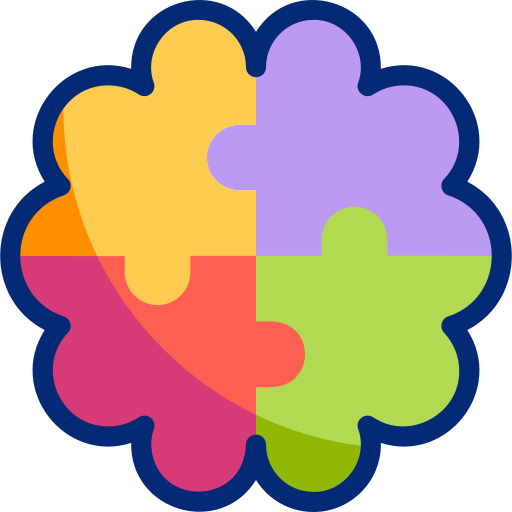The wave that was always there: Why late diagnosis — and early support — both matter

Every few months, someone warns of the “tidal wave of neurodiverse diagnoses” — as if we’ve all caught ADHD like the flu. The implication is that difference has become fashionable, that acronyms are the new accessories.
Relax. The wave didn’t arrive. We finally turned around and faced the ocean.
The problem with old templates
For decades, diagnostic tools were designed around one prototype: a young white boy bouncing off a classroom wall. Research, checklists, “typical symptoms” — all written in that shape.
If you didn’t fit it, you vanished between the lines. Generations of girls and women learned to perform fine. They were praised for neat handwriting and quiet compliance while quietly unravelling inside.
When you grow up believing chaos must stay hidden, you become a world-class masker. You study expressions, script your reactions, and rehearse every social move. By adulthood, you’re the person everyone calls reliable — and inside you’re running triage.
Then one night you scroll past a post about ADHD in women and think, Oh. That’s me. Cue the tidal wave.
Not more people — more precision
In South Africa, we’re decades behind the diagnostic curve. Many clinicians still treat ADHD as a childhood quirk and autism as something only boys have. Adult assessments are rare, expensive, and often misunderstood.
Even when women finally get tested, they’re mislabelled with anxiety, depression or borderline personality disorder. (To be fair, twenty years of masking can make anyone look borderline.)
Globally, women are diagnosed with ADHD about five years later than men — despite showing symptoms at the same age. Studies show women are also **twice as likely to remain undiagnosed for autism.**¹
So yes, numbers are rising. Not because more people suddenly “caught” neurodiversity — but because the tools improved, the research diversified, and the silence cracked. It’s not an epidemic. It’s a backlog.
The relief and the grief
Getting a late diagnosis is emotional archaeology. You dig through old report cards and job reviews and finally see the pattern: the unfinished tasks weren’t laziness, the social exhaustion wasn’t drama, the overthinking wasn’t insecurity. It was wiring.
South African women tell the same story: years of over-compensation, burnout misread as “high standards,” therapy that danced around the truth. Then someone finally says the word — ADHD, autism, AuDHD — and the puzzle snaps into focus.
It’s liberating, but it’s also gutting. Because now you know how different life could have been if someone had noticed sooner.
The late-diagnosis paradox
Of course, the minute you mention being diagnosed as an adult, someone will mutter, “Everyone’s neurodivergent now.” They say it like you’ve joined a pyramid scheme.
But nobody spends R8 000 on an assessment for vibes. What looks like a spike is a queue finally being processed.
And while TikTok may hand you language, it cannot hand you a diagnosis. Use it as a mirror, not a medical report.
The classroom effect
The same shift is happening in schools. Teachers who were once told to “manage behaviour” are realising they’re actually managing nervous systems.
We’re seeing more referrals, more diagnoses, and more requests for exam concessions — not because children have changed, but because we’ve finally stopped treating burnout, boredom, and sensory overload as bad behaviour.
At the moment, concessions are the system’s Band-Aid: extra time, a reader, a scribe — small patches on a structure built for uniformity. They matter. But they’re not enough.
What neurodivergent children and teenagers really need isn’t pity or a “special-needs” label. They need environments designed for how their brains actually function. That means classrooms where movement isn’t misbehaviour, where sensory calm counts as focus, and where learning isn’t measured only by how long you can sit still and regurgitate information.
A child who hums quietly while working isn’t being disruptive — she’s regulating her focus.
Too often, when a learner struggles in mainstream education, the automatic suggestion is a remedial school. Remedial schools are essential for children with genuine learning disabilities or developmental delays — but that’s not the same as neurodiversity.
Many neurodivergent learners are highly intelligent, creative, analytical and curious. They don’t need simpler work — they need different conditions. Flexible pacing, clear structure without rigidity, teachers who understand executive function, and assessments that measure understanding rather than compliance.
At its core, neurodiversity isn’t about ability; it’s about wiring. And when you place a wired-differently brain in a system designed for sameness, it struggles, of course.
One would never expect an Olympic swimmer to win the 100-metre hurdles, or a brilliant engineer to perform heart surgery. They’re not considered failures for those shortcomings — they’re specialists operating outside their element. The same mindset should apply to education.
Our goal isn’t sameness; it’s fit. Until schools start flexing their environments rather than forcing their learners to bend, concessions will remain band-aids on a system bleeding potential.
As the Department’s Inclusive Education Policy keeps reminding us, the goal is “barrier-free learning.” But policy is only paper until classrooms breathe it. We keep trying to fix the child rather than redesign the classroom.
Why it matters here
In South Africa, access is still a privilege. Private assessments can cost R6 000 – R12 000, and public-sector pathways are patchy, mostly geared toward children. If you’re an adult without disposable income, you’re often invisible unless you’re in crisis.
Yet the country is full of women who’ve held households, careers, and communities together while running on the wrong operating system. They’ve been called too emotional, too intense, too much. Now they’re discovering it was never too much — it was misunderstood.
Employers are slowly catching on. The Employment Equity Act already covers “reasonable accommodation,” but few HR policies mention cognitive differences. That needs to change.
The real wave
The real wave isn’t diagnosis. It’s honesty.
It’s teachers who stop labelling quiet burnout as bad behaviour. It’s doctors who listen when a woman says, “I can’t switch off.” It’s workplaces learning that neurodivergent employees aren’t problems to fix but systems to understand.
Neurodiversity isn’t new. Our courage is.
If honesty feels like a wave, that’s only because we spent years pretending the water wasn’t there.
If this sounds familiar …
- Suspect you or your child might be neurodivergent? Start with a brief online screening, but book a clinician who specialises in adults or learners for a proper assessment.
- Track patterns for three weeks — sleep, energy, overload, focus, or classroom triggers — it gives your assessor real data.
- At school or work, ask for one accommodation first — quiet space, written instructions, or extra processing time — and build from there.
¹ Sources: The Guardian (2024); Pharmacy Times (2023); ADDitude Magazine (2024)
About the author
Nicola Killops is a Johannesburg-based writer, editor and neurodiversity education specialist. She develops inclusive learning frameworks and study tools that reimagine how children learn — and how adults understand them.
As an education editor and feature writer for Estates in Africa, she curates stories that connect communities, schools and families through meaningful dialogue. In collaboration with behaviour analyst Kate La Trobe, she also designs neuro-inclusive learning and parenting frameworks that support children with complex profiles — helping schools bridge the gap between theory, practice and humanity.
Through her platform, NeuroParenting Hub, Nicola continues to advocate for strength-based education, emotional safety, and classrooms that fit the child, not the other way around.





